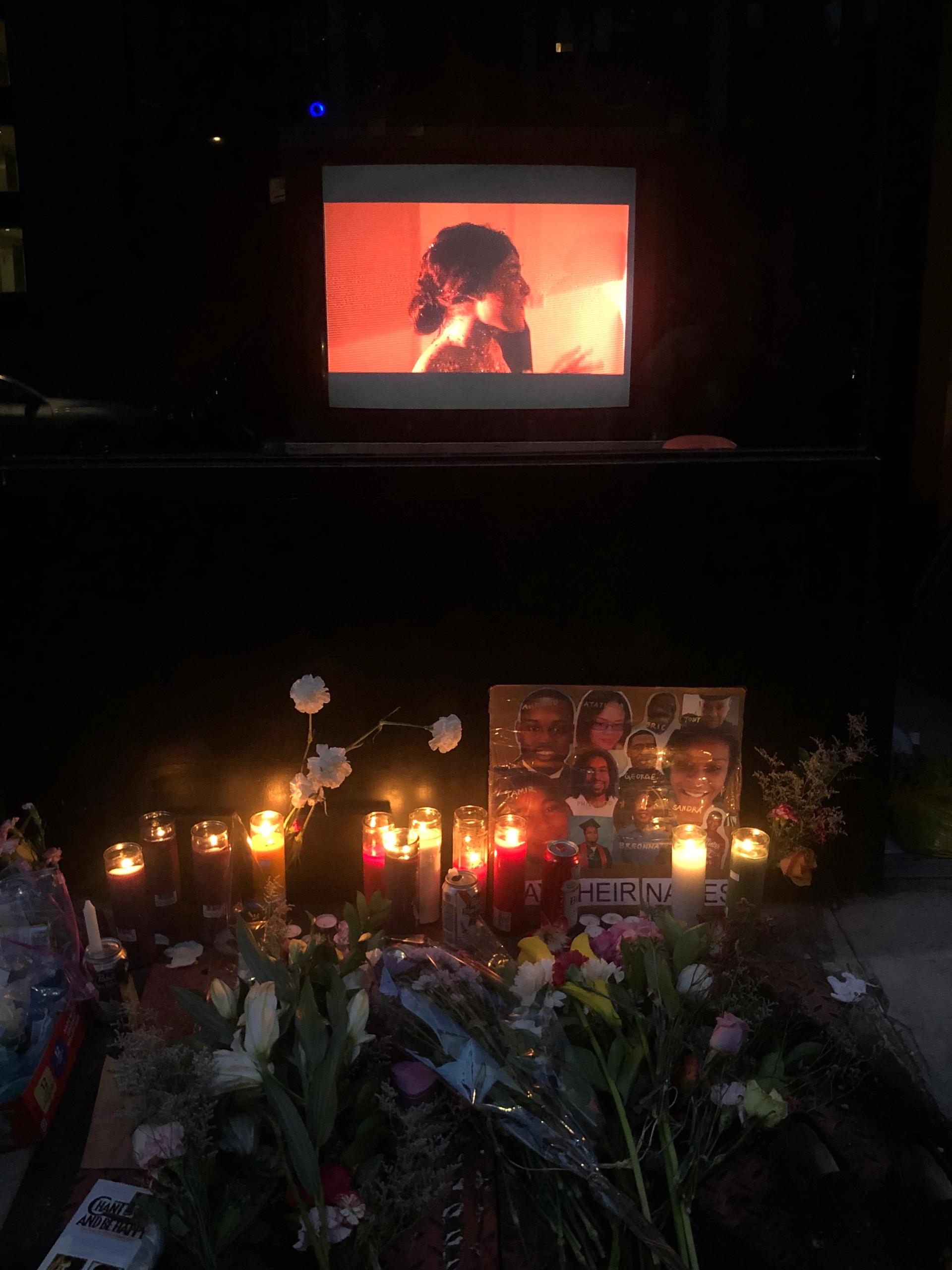Art Pieces About Racial Disperity in the Art Community
It is ane of the fine art market's most uncomfortable truths that, although black and minority artists are enjoying greater representation, information technology remains white people who predominantly sell—and buy—their work. But as the Movement for Black Lives reaches fever pitch in the U.s., the art trade is being asked to face up racial inequality amidst its ranks.
"I have been dismissed and ignored by many a white male—[from] museum directors and gallerists, to writers and publishers—who frequently approach my white employees starting time with questions and inquiries," says the San Francisco dealer Karen Jenkins-Johnson of her 24 years equally a black gallery owner. "I joke darkly that I'1000 the invisible gallerist."
Every bit dealers, fairs and other businesses issue solidarity statements outlining the steps they are taking to promote multifariousness, Jenkins-Johnson says the problem is much more complex than throwing money at it by donating to justice funds or hiring black, Indigenous and people of colour (Bipoc) staff.
"It is i affair to hire a person of colour; it's another thing to put a person of colour in a leadership role; it'south another thing to give that person room to participate in steering the gallery," Jenkins-Johnson says.
Wokeness for the wealthy
KJ Freeman of New York's Housing gallery says the Black Lives Matter statements issued by art businesses "are performative wokeness. Information technology comes from a like place every bit wanting to get into the Prada political party at an art fair: the want for access."
Housing opened its new space on the Lower East Side in June by handing out h2o and supplies to protesters while mounting a non-selling show, Vigil for Black Decease, featuring works past artists including Marlon Riggs, Howardena Pindell and David Wojnarowicz viewable from the street.
"Black collectors are now being shut out of collecting black artists. This is a generational wealth consequenceKaren Jenkins-Johnson
The art market'due south organization of value has e'er been built on principles of exclusion and ownership , Freeman explains. "What we're seeing at present is what we saw during the Aids crisis; it'due south what nosotros saw during the Civil Rights motion and the Vietnam War"—a social issue being co-opted into an asset for the wealthy. "Information technology's not radical inclusion to sell a work by Wojnarowicz for a record price," Freeman says, referring to a work by the late Shine-American gay activist, which sold for a tape $1.5m at Sotheby'due south in 2018. "That's merely capitalism. When you tin control the value of that moment in history, it's a grade of power."
Post-obit the record-breaking $21m sale of Kerry James Marshall'south Past Times (1997) at Sotheby's in 2018, a report by Artnet found that $2.2bn has been spent on piece of work by African American artists over the previous ten years—only one.2% of the global auction market place during the same period. And 10% of that had been spent within the first half of that yr.
More money, more bug?
The rise in prices corresponds with galleries diversifying their rosters, taking on minority artists, while still selling their piece of work to predominantly white clients. Jenkins-Johnson says this is a net good for undervalued black artists but it does little to accost structural racism. "The galleries and museums desire our culture but not our people," Jenkins-Johnson says. "Black collectors are at present being shut out of collecting black artists. This is a generational wealth effect, as well as white gallerists catering to their clients. They don't want to lose these clients, so they provide them with access over blackness collectors who are inbound the marketplace."
While the "new normal" has become a common phrase in relation to Covid-19, Freeman thinks it ameliorate describes the electric current climate of racial reckoning and community-driven alter. "Collectors need to buy art like they purchase bread—you know, the artisanal shit from the local place on the corner." She adds that galleries and artists need to "dissent" from the fairs and auctions organisation that exhausts rather than supports them.

Installation view of Keijaun Thomas's "My Last American Dollar: Round 1. Tricking and Flipping Coins: Making Dollars Hitting and Round ii. Black Angels in the Infield: Dripping Faggot Sweat", office of Housing'due south Vigil for Black Death exhibition. Courtesy of the artist and Housing
Galleries of all sizes such equally Hauser & Wirth, Pace, Goodman, Sean Kelly and Lehmann Maupin—amid countless others—accept avowed their delivery to supporting racial equality. Sotheby's, Christie's and Phillips all tell The Fine art Newspaper they accept set upwards diversity panels and chore forces to field concerns over internal racism, with goals for hiring more Bipoc staff. Swann—the kickoff auction house to introduce sales for African American fine art—says its specialists are encouraged to decline participating in white-simply events and console discussions from here on out.
During the online edition of Art Basel in June, the New York Times reported that none of the 281 exhibiting galleries were owned past an African American. Art Basel's squad says in response that information technology is "exploring how to use our platforms to create greater possibilities for artists of color and galleries owned past people of colour to be a part of our shows". Similarly, a Frieze spokeswoman says the company will add more people of colour to its off-white committees and curatorial leadership, likewise every bit promote and support causes that combat racism.
Indeed, at this year'due south Frieze Los Angeles, the artist and activist Patrisse Cullors—who co-founded Black Lives Thing in 2014—performed a silent dance political party with willing fairgoers entitled Fuck White Supremacy, Let's Get Free. The bulk of the participants were white—and therein lies the ongoing problem.
Source: https://www.theartnewspaper.com/2020/07/10/how-the-art-industry-is-grappling-with-its-systemic-race-inequality
0 Response to "Art Pieces About Racial Disperity in the Art Community"
Post a Comment